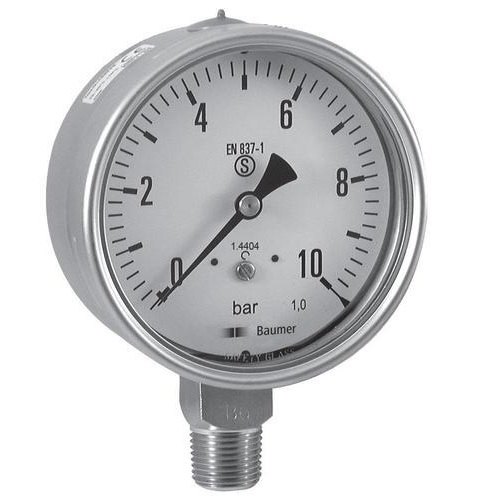Introduction
Instrumentation technicians use pressure gauges to measure and track pressure levels in a variety of industrial processes.
These instruments are essential for the maintenance of operational efficiency and safety in a variety of industries, including manufacturing, petroleum, petrochemical, and other sectors.
This blog post will provide an in-depth exploration of the intricacies of pressure gauge functioning, including the fundamental principles and components.
The Basic Principle of Pressure Gauge Working
These gauges operate on a fundamental principle: They take pressure applied to a gas or liquid and turn it into a mechanical displacement that’s then converted into a pressure that can be measured.
The most common type of pressure gauge, the Bourdon tube gauge, relies on the elastic properties of metals to achieve this measurement.
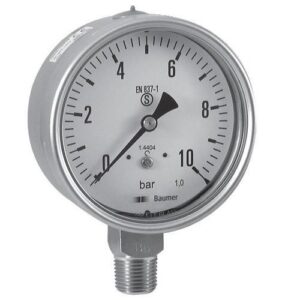
Understanding the Bourdon Tube Pressure Gauge
The Bourdon tube is a curved metal tube typically made from materials like brass, stainless steel, or beryllium copper. One end of the tube is closed, and the other is connected to the system or vessel where pressure needs to be measured.
As the pressure inside the tube increases, it tries to straighten due to the pressure difference between its inside and outside. This causes the free end of the tube to move, and this movement is then transmitted to the pointer through a series of levers and gears.
Components of a Pressure Gauge
To better understand the inner workings of a pressure gauge, let’s explore its key components:
a. **Bourdon Tube:** As mentioned earlier, the Bourdon tube is the primary sensing element. Its shape and material are carefully selected based on the application’s pressure range and the medium being measured.
b. **Pointer:** The pointer is attached to the Bourdon tube and moves in response to the tube’s deformation. It indicates the pressure value on the gauge’s dial.
c. **Dial:** The dial is a circular scale marked with pressure units, allowing technicians to read the pressure value accurately.
d. **Connection Fittings:** These fittings provide the means to connect the pressure gauge to the system or process being monitored.
e. **Movement Mechanism:** This mechanism translates the linear movement of the Bourdon tube into the rotary motion of the pointer.
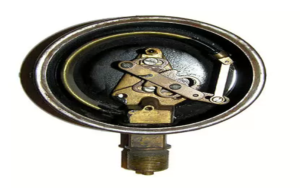

Bourdon Tube Pressure Gauge
Pressure gauges for Instrumentation Technicians
Instrumentation technicians work with various gauge types, each suited for specific applications:
a. **General Purpose Gauges:** These gauges are commonly used in industrial settings to measure pressure in a wide range of applications.
b. **Compound Gauges:** Compound gauges can measure both positive and negative pressures, making them suitable for applications where vacuum pressure may occur.
c. **Differential Pressure Gauges:** These gauges are used to measure the difference in pressure between two points in a system. They find applications in filter monitoring and flow measurement.
d. **Digital Pressure Gauges:** These gauges provide accurate and easy-to-read pressure values. They often come with additional features like data logging, digital outputs, and communication interfaces.
The Role of Instrumentation Technicians
Instrumentation technicians play a crucial role in the proper functioning and accuracy of gauges. Their responsibilities include:
a. **Installation and Calibration:** Technicians ensure that gauges are correctly installed and calibrated according to the manufacturer’s specifications.
b. **Periodic Maintenance:** Regular maintenance and inspection of gauges are essential to ensure their accuracy and reliability.
c. **Troubleshooting and Diagnostics:** When gauges malfunction or display inaccurate readings, instrumentation technicians troubleshoot the issues and implement necessary repairs.
d. **Instrumentation Loop Checks:** Technicians verify that the pressure gauge readings match the expected values within the overall instrumentation loop.

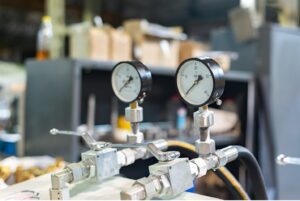
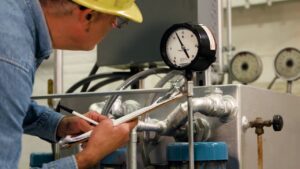
Importance of Accurate Pressure Measurement
Accurate pressure measurement is vital in industrial processes for several reasons:
a. **Safety:** In industries dealing with hazardous materials or high-pressure systems, accurate pressure measurement is crucial for maintaining a safe working environment.
b. **Efficiency:** Precise pressure control helps optimize energy consumption and enhances overall process efficiency.
c. **Quality Assurance:** In industries like pharmaceuticals and food processing, accurate pressure measurement ensures product quality and consistency.
d. **Regulatory Compliance:** Many industries must adhere to specific pressure regulations to ensure safety and environmental standards.
Conclusion
Pressure gauges are essential instruments used by instrumentation technicians to monitor and maintain optimal pressure levels in various industrial processes.
The Bourdon tube pressure gauge, with its elegant design, forms the basis of many pressure gauge types, and instrumentation technicians are responsible for ensuring their accuracy and reliability.
With their expertise in installation, calibration, maintenance, and troubleshooting, these skilled professionals play a vital role in ensuring the safety and efficiency of industrial operations.
Accurate pressure measurement is paramount for product quality, energy efficiency, and regulatory compliance, making pressure gauges and instrumentation technicians indispensable assets in modern industries.
Home Page Our You tube Channel Our Face Book Page